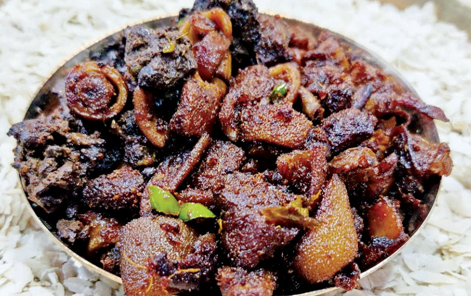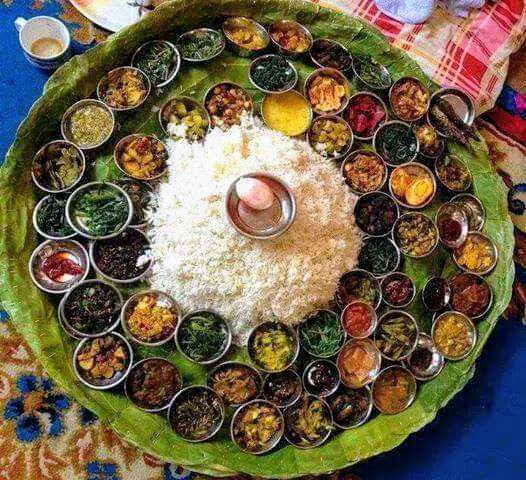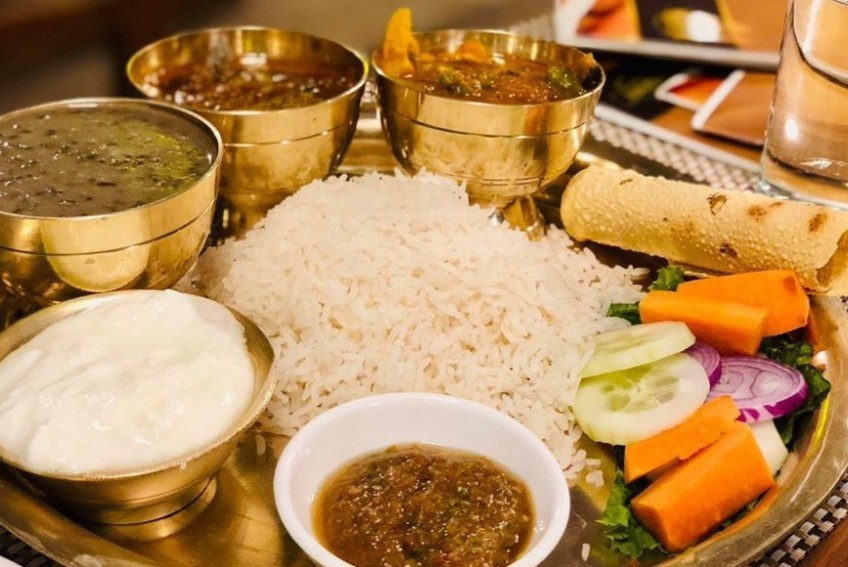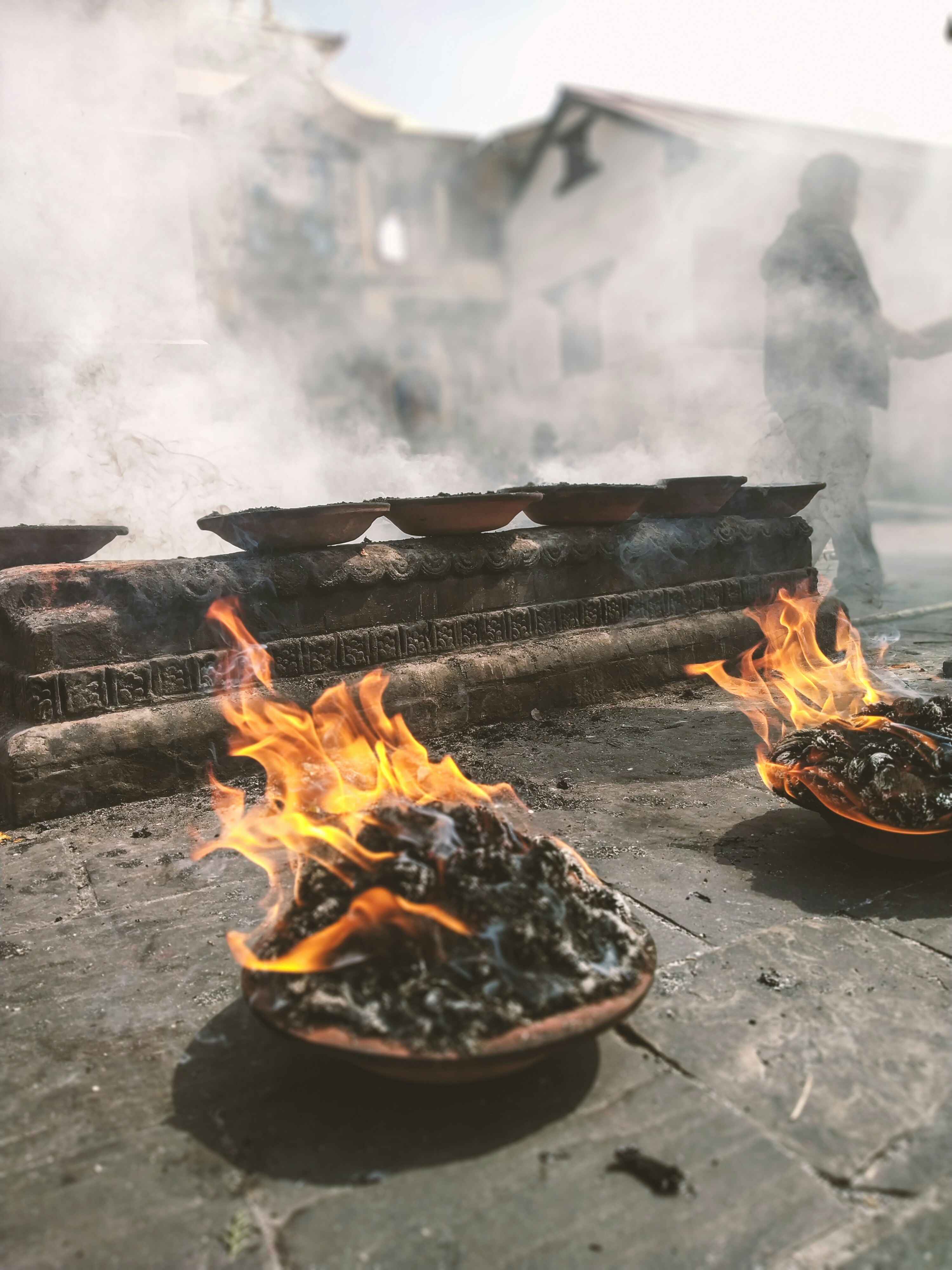Share this Article

Introduction
In the vibrant streets of Nepal, and more precisely in the Kathmandu Valley, it is possible to discover a genuine and delicious snack typical of local culinary tradition: Bhuttan. This dish, made of fried intestines and other organ meats, is a favorite among locals who eat it for its intense flavor and cultural tradition. Typically taken with tea or liquor like Aila, Bhuttan is an epitome of Nepal's frugal cuisine and the Newar people's nose-to-tail eating habit. This article discusses Bhuttan's etymology, preparation, cultural context, and enduring popularity.
Origins and Historical Background
Bhuttan's roots are with the Newar people, the native inhabitants of the Kathmandu Valley. The Newars have a long tradition of nose-to-tail cooking, with little waste and maximum flavor, for which they are renowned, as well as lavish feasts and innovative use of ingredients. Organ meats like intestines, liver, and stomach were once "peasant food" because they were cheap, but over time, they became luxury foods in Newar cuisine (Shrestha, 2017).
The dish likely came into prominence with the Malla dynasty (12th–18th century), a period in which Newar cuisine and culture flourished. With the connectivity of trade lines opening up Nepal to Tibet and India, the spices turmeric, cumin, and ginger became accessible, which gave the local dishes a new turn. Bhuttan's pungent flavors—mix of spice, heat, and umami—witness this food history. Today, it is common to find in street food centers and family feasts alike, transcending the social divide.
Ingredients and Preparation
Bhuttan's appeal is its simplicity and intense flavors. The dish primarily comprises pork or buffalo intestines, but liver, lungs, and stomach are also added to bring variety. This is how it is prepared step by step:
Cleaning the Organs:
New intestines are washed clean with water and salt to clear out impurities. Vinegar or lime juice is used by some cooks for additional cleaning. The organs are boiled until cooked through, softening their texture and toning down their pungent smell.
Slicing and Marinating:
The boiled meat is sliced into bite-sized pieces and marinated in spices such as turmeric, cumin, chili powder, and garlic. There is a dash of soy sauce or timur (Sichuan pepper) added for depth.
Stir-Frying:
The marinated meat is cooked with onions, tomatoes, and green chilies in mustard oil or ghee. Some recipes include leafy vegetables such as spinach or rayo sag (mustard greens) for freshness.
Serving
Bhuttan is spicy, typically garnished with cilantro and served with chiura (beaten rice) or bread. A side of achar (pickle) or cold beer follows its hot kick.
The dish's beauty lies in its texture contrast—chewy intestines, soft liver—and its balance of heat, sourness, and earthiness.
Cultural Significance
Bhuttan holds a special place in Nepal's food culture because:
Festivals and Celebrations:
At festivals such as Dashain and Indra Jatra, Bhuttan is a common feature at communal meals. It is also a favorite at bhoj (traditional Newar feasts), where it represents hospitality and abundance.
Social Equality:
Organ meats were traditionally within the reach of all classes of society. Bhuttan's availability at street stalls as well as high-end restaurants highlights its status as a unifier in Nepal's caste-based society (Gellner, 2005).
Ritual Offerings:
Organ meat is utilized to present to gods in some Newar ceremonies as a sign of respect. Sharing Bhuttan during ceremonies reaffirms group identity.
Regional Variations
Though Bhuttan is specifically associated with the Newars, regional variations are found across Nepal:
Kathmandu Style: Spicy, with generous amounts of timur and garlic, typically cooked in mustard oil.
Terai Version: Uses buffalo intestines and contains turmeric and curry leaves, reflecting Indian influences.
Mountain Regions: Goat or yak organs substitute for pork, cooked in dried chilies to provide heat in cold temperatures.
In Tibet, a similar shapale dish consists of stuffed intestines, demonstrating cross-cultural food exchange.
Health Considerations
Organ meats such as those found in Bhuttan are high in nutrients, providing:
Protein: Necessary for repairing muscles.
Iron and B Vitamins: Promotes energy and red blood cell formation.
Zinc: Enhances immunity.
But moderation is recommended due to high cholesterol content. Proper preparation and sanitation are crucial to avoid food poisoning. Traditional cooks emphasize fresh produce and time-consuming preparation to make it safe.
Bhuttan in Modern Times
Globalization and urbanization have transformed Bhuttan's status:
Street Food Culture:
Food stalls in Kathmandu's Ason Tole and Patan offer Bhuttan sizzling on iron pans, relished by locals and tourists. It's touted as a daring "offal delicacy" in travel writing.
Gourmet Variations:
Fine dining establishments revolutionize Bhuttan with gourmet twists, including presenting it with quinoa or presenting it as tapas. Chefs highlight its sustainability in nose-to-tail movements.
Youth Engagement:
Though younger generations originally shunned organ meats, food festivals and social media reactivated the interest. Social media clips of Bhuttan preparation making a viral impact on platforms like TikTok celebrate its cultural history.
Challenges and Preservation
The popularity of Bhuttan despite all this, it faces challenges from:
Stigma: Some equate street foods with poverty, deterring prospective customers.
Hygiene Issues: Lack of proper hygiene procedures among street vendors poses risks.
Commercialization: Industrialized versions lack the home-cooked essence of Bhuttan.
Conservation efforts include:
Cooking Demonstrations: NGOs teach proper food preparation methods.
Food Festivals: Tastings like Taste of Nepal put Bhuttan's heritage in the spotlight.
Documentation: Food historians record traditional recipes to prevent their loss (UNESCO, 2020).
Conclusion
Bhuttan is not just a snack, it's a tribute to the creativity of Nepalese cuisine and the cultural resilience of Nepal. From humble beginnings to modern plates, it embodies resourcefulness, community, and bravery in flavor. As the world looks to sustainable eating, Bhuttan is a dish that honors tradition but adapts for the future. For those open to the unusual, a plate of Bhuttan is not just a meal, but a story of heritage and heart.
Categories:
Food & Drink
Tags:
food
,
Meat
,
Nepli Food







